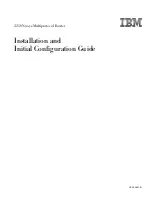
2
w
w
w
.
A
u
t
o
m
a
t
i
o
n
D
i
r
e
c
t
.
c
o
m
1
-
8
0
0
-
6
3
3
-
0
4
0
5
Copyright 2014,
AutomationDirect.com
Incorporated/All Rights Reserved Worldwide
3.96
[100.6]
1.50
[38.1]
Dia. 0.15 [3.8]
Use for direct
panel mounting
to a flat surface.
1.98
[50.3]
3.26
[82.8]
0.06
[1.5]
Units: inches [mm]
1.98
[50.3]
Snaps to standard
35 mm x 7.5 mm height
DIN rail (EN50022)
Removable
Screw Block,
Phoenix
p/n 1757035
1.01
[25.7]
1.01
[25.7]
8 Port – SE-SW8U
4.35
[110.5]
Dimensions:
Snaps to standard
35 mm x 7.5 mm height
DIN rail (EN50022)
Removable
Screw Block,
Phoenix
p/n 1757035
C
2.25
[57.1]
2.25
[57.1]
Dia. 0.175 [4.4]
Use for direct
panel mounting to
a flat surface with
up to #8 screw.
4.00
[101.6]
0.30
[7.6]
4.35
[110.5]
Removable
for direct panel
mounting
1.50
[3.81]
1.60
[40.6]
Units: inches [mm]
0.80
[20.3]
3.00
[76.2]
0.39
[9.9]
8 Port – SE-SW8U-WT
4.50
[114.3]
0.175
[4.4]
Additional Help and Support
• For additional product support, specifications, and
installation, a User Manual, SE-USER-M, is available
as a downloadable PDF file from the Online
Documentation area of
www.AutomationDirect.com
• For additional technical support and questions, call our Technical
Support team @ 770-844-4200.
P2 P1
One DC Supply
+ –
Single DC Power
Redundant DC Power
Chassis
GND
(panel)
P2 P1
+ –
+ –
Chassis
GND
(panel)
Dual DC Supplies
Power Wiring:
The switch can be powered from the same DC source that is used to
power your other devices. To maintain the UL508 listing, this must be
a Class 2 power supply. A DC voltage in the range of 10 to 30 VDC
needs to be applied between the P1 (plus) terminal and the Minus
terminal as shown below. The chassis screw terminal should be tied to
panel or chassis ground. To reduce down time resulting from power
loss, the switch can be powered redundantly with a second power
supply as shown below.
A recommended DC power supply is
AutomationDirect.com
Part
number PSC-24-015.
Communication Ports Wiring:
The switch provides connections to standard Ethernet devices such as
PLCs, Ethernet I/O, industrial computers and much more. Use data-
quality (not voice-quality) twisted pair cable rated category 5 (or better)
with standard RJ45 connectors. Straight-through or crossover RJ45
cable can be used for all devices the switch is connected to as all the
ports are capable of auto-mdi/mdix-crossover detection.
The RJ45 Ethernet port connector bodies on the switch are metallic
and connected to the Chassis GND terminal. Therefore, shielded cables
may be used to provide further protection. To prevent ground loops,
the cable shield should be tied to the metal connector body at one end
of the cable only. Electrical isolation is also provided on the Ethernet
ports for increased reliability.
DIN rail mounting steps, plastic and metal case:
1. Hook top back of unit over the DIN rail.
2. Push bottom back onto the DIN rail until it snaps into place.
DIN rail removal steps, plastic case:
A. Insert screwdriver into DIN clip and pry until it releases from the rail.
B. Unhook top of unit from DIN rail.
DIN rail removal steps, metal case:
A. Push the unit down to free the bottom of the DIN rail.
B. Rotate the bottom of the unit away from the DIN rail.
C. Unhook top of unit from DIN rail.
Installation – DIN Rail Mounting:
The switch can be snapped onto a standard 35 mm x 7.5 mm height
DIN rail (Standard: CENELEC EN50022) and can be mounted either
vertically or horizontally.
10-30 VDC, 4.0W
1
2
A
B
A
B
C
Maximum power
terminal screw
torque is
5.0 lb-in (0.57Nm).
Mounting
Removal, plastic case
Removal, metal case
Wire Size Range
24 – 12 AWG
All power, input and output (I/O) wiring must be in accordance with Class I, Division 2 wiring methods and in
accordance with the authority having jurisdiction.
“This Equipment is Suitable for Use in Class I, Division 2, Groups A, B, C, D or Non-Hazardous Locations Only”.
WARNING – EXPLOSION HAZARD – SUBSTITUTION OF COMPONENTS MAY IMPAIR SUITABILITY FOR CLASS I, DIVISION 2.
WARNING – EXPLOSION HAZARD – WHEN IN HAZARDOUS LOCATIONS, DISCONNECT POWER BEFORE REPLACING OR WIRING UNITS.
WARNING – EXPLOSION HAZARD – DO NOT DISCONNECT EQUIPMENT UNLESS POWER HAS BEEN SWITCHED OFF OR THE AREA IS
KNOWN TO BE NONHAZARDOUS.
WARNING – EXPLOSION HAZARD – IN HAZARDOUS OR POTENTIALLY HAZARDOUS LOCATIONS, DO NOT SEPARATE ANY
PART OF THE UNIT WHEN ENERGIZED. USE THE UNIT FOR INTERNAL CONNECTIONS ONLY.
Tout pouvoir, le câblage d’entrée et de sortie (I/O) doivent être conformes aux méthodes de câblage de Classe
I, Division 2 et conformément à l’autorité compétente.
“Cet équipement est adapté pour une utilisation en Classe1, Division 2, Groupes A, B, C et D ou endroits
non-dangereux seulement ”.
AVERTISSEMENT – RISQUE D’EXPLOSION – LA SUBSTITUTION DE TOUT COMPOSANT PEUT NUIRE À LA CONFORMITÉ DE CLASSE I,
DIVISION 2.
AVERTISSEMENT – RISQUE D’EXPLOSION – LORSQUE DANS DES ENDROITS DANGEREUX, DÉBRANCHEZ LE CORDON
D'ALIMENTATION AVANT DE REMPLACER OU DE BRANCHER LES MODULES.
AVERTISSEMENT – RISQUE D’AVERTISSEMENT – NE DÉBRANCHEZ PAS L’ÉQUIPEMENT PENDANT QUE LE CIRCUIT EST DIRECT OU À
MOINS QUE L’ENVIRONNEMENT SOIT CONNU POUR ÊTRE LIBRE DE CONCENTRATIONS INFLAMMABLES.
AVERTISSEMENT – RISQUE D’EXPLOSION – DANS LES ENDROITS DANGEREUX OU POTENTIELLEMENT DANGEREUX, NE PAS
SEPARER UNE PARTIE DE L'UNITE SOUS TENSION. SEULEMENT UTILISEZ L'APPAREIL POUR LES CONNEXIONS INTERNES.
WARNING




















